Home Decor
Seasonal Gardening In Glasgow: Making the Most of Each Season’s Produce and Blooms
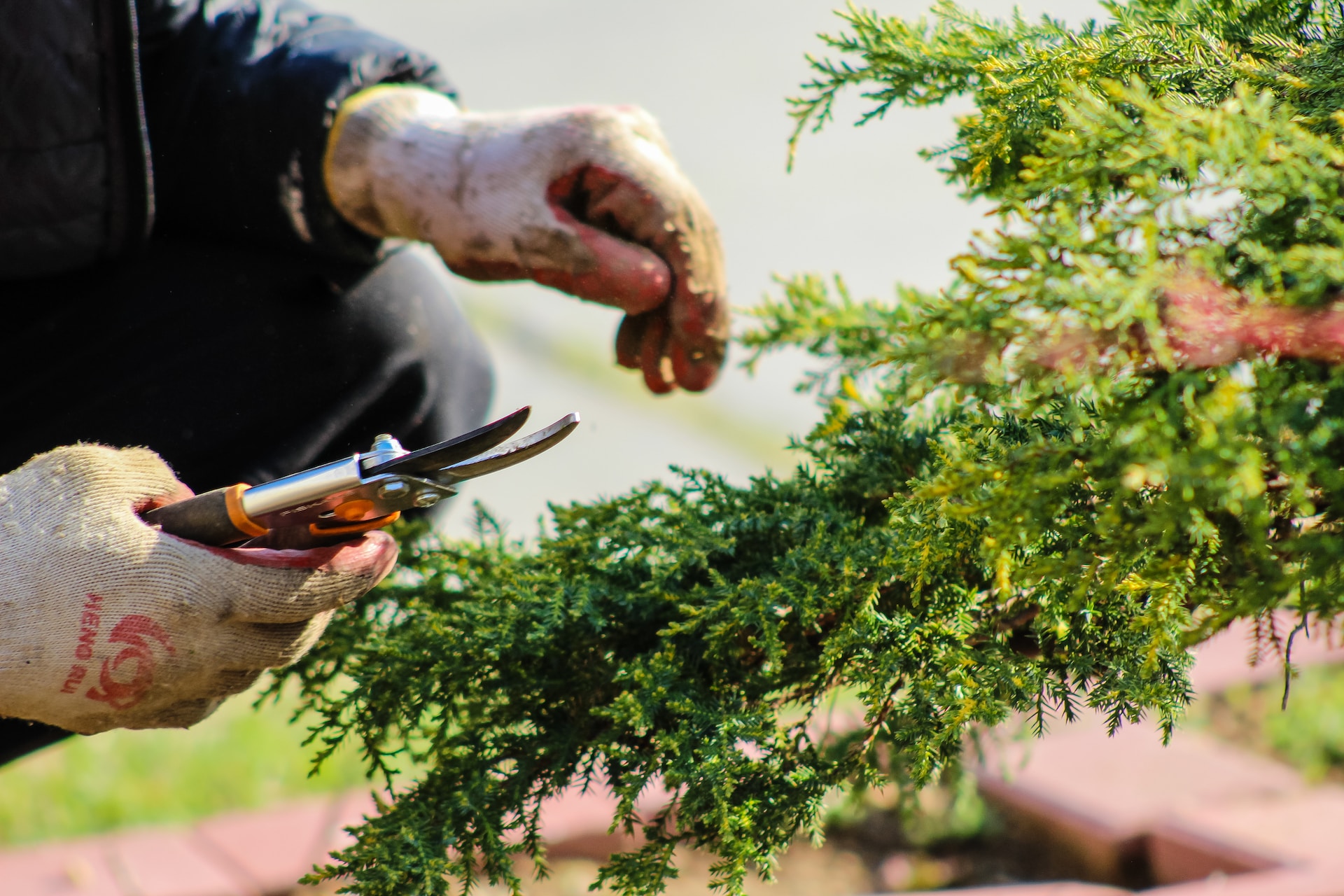
Glasgow, nestled amidst Scotland’s lush landscapes, stands as a testament to the harmonious blend of urban life with nature. Gardening in this temperate maritime haven is both a challenge and a reward, given its distinct seasonal transitions. Seasonal gardening, when approached with knowledge and passion, not only enriches the biodiversity of Glasgow but also transforms the cityscape with year-round visual delights.
Embracing the cyclical rhythm of nature, understanding the local soil, and anticipating the climatic intricacies can result in a garden that’s a veritable feast for the senses, regardless of the season.
Seasonal Gardening In Glasgow in Winter: Dormant Beauty and Early Blooms
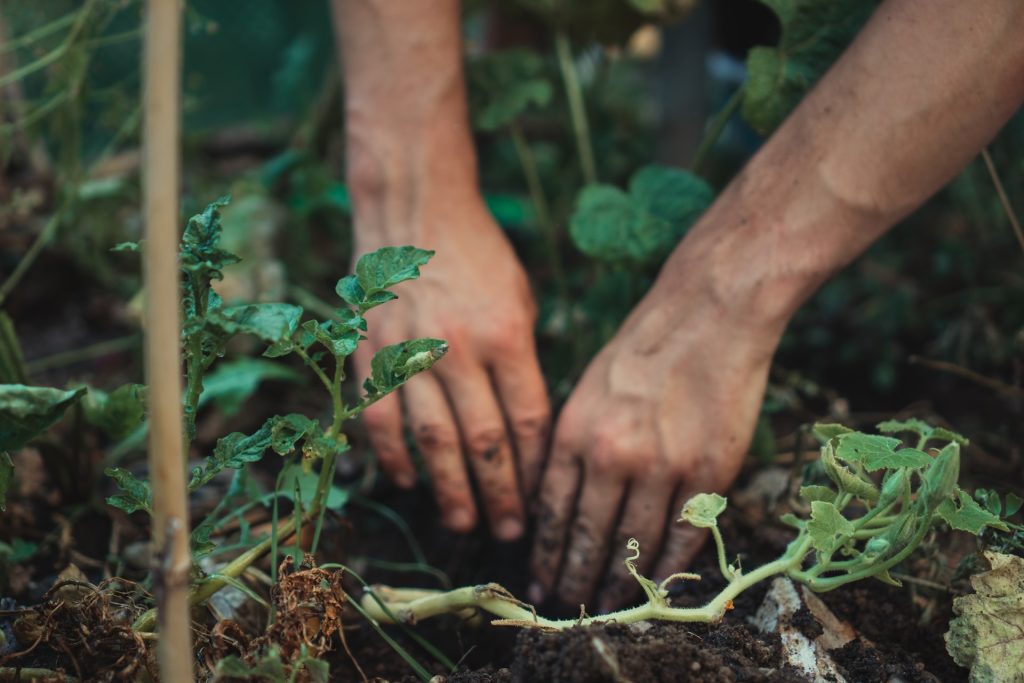
While many perceive winter as a time of dormancy in the garden, it is, in fact, a season of underlying vibrancy and preparation. The seemingly barren landscapes lay the canvas for early bloomers and set the stage for the gardening year ahead.
1. Preparing the Soil
In Glasgow’s crisp winter months, the garden’s soil, devoid of its usual hustle of growth, offers an opportune moment for rejuvenation. Enriching the earth now ensures a fertile foundation for the coming seasons. By incorporating well-rotted compost or aged manure, gardeners reintroduce vital nutrients and beneficial microorganisms into the soil. This organic matter not only improves soil structure, promoting better drainage and aeration but also serves as a reservoir of slow-release nutrients, paving the way for robust spring growth.
2. Winter Plants
Even in the chill of winter, some plants defy the odds, piercing through the frost with their blooms. Winter jasmine, with its delicate yellow flowers, is a beacon of hope amidst the grey, while the pristine white of snowdrops offers a contrast to the barren earth. Another gem for winter gardens in Glasgow is the Hellebore, often dubbed the ‘Christmas Rose’. Hellebores showcase a range of subtle colors and patterns, proving that even in the coldest of months, nature has its artistry on display. These plants are not just aesthetic delights; they’re also vital sources of nectar for any brave pollinators venturing out in the cold.
3. Protection
Winter’s beauty comes with its challenges. Glasgow’s harsh frosts can be detrimental to tender plants, especially evergreens that retain their foliage and young plants that haven’t yet established robust root systems. Protective measures become paramount. Horticultural fleece acts as a barrier, trapping heat and ensuring that the cold doesn’t penetrate the plants beneath. Similarly, mulching with organic materials like straw or leaves provides an insulating layer for plant roots, shielding them from temperature fluctuations and retaining essential soil moisture. Beyond just physical protection, these measures also bolster the soil’s health, ensuring that when spring arrives, the garden is primed for growth.
4. Pruning and Shaping
Pruning is an art and science, essential not just for aesthetics but for the health and vigour of many plants. During winter, deciduous trees and shrubs shed their leaves, revealing their skeletal structure. This leafless state provides gardeners with a clear view, making it easier to identify and remove dead or diseased branches. Pruning during the winter dormancy reduces the stress on plants, allowing them to direct their energy towards new growth come spring. Furthermore, cutting back in the cooler months reduces the risk of disease transmission, as many pathogens are less active. Thus, a well-pruned garden in Glasgow’s winter sets the stage for a lush, disease-free spring.
5. Bird Feeders
Winter’s embrace can be harsh on local bird populations, with natural food sources dwindling. By setting up bird feeders, gardeners offer a lifeline to these feathery friends. The sights and sounds of finches, robins, and other local birds flitting about can enliven even the dreariest winter days. Using a mix of seeds, nuts, and fat balls caters to a variety of bird species. Moreover, birds play a pivotal role in pest control and pollination. Thus, by nourishing them in winter, gardeners foster a symbiotic relationship that reaps rewards in the warmer months.
6. Planning Ahead
Winter’s stillness offers a reflective pause in the gardener’s calendar. With reduced hands-on tasks, it’s the perfect time for research and planning. Gardeners can delve into horticultural literature, explore new plant varieties suited to Glasgow’s climate, or perhaps sketch out new design layouts. Winter might also be the time to ponder larger projects: a new garden shed, pathways, or raised beds. By utilizing this downtime for meticulous planning, gardeners ensure that when the growing season commences, they’re equipped with a clear vision and actionable blueprint.
7. Water Features
While the thought of water in Glasgow’s frosty winters might evoke images of frozen ponds, modern garden features can defy these icy odds. Heated birdbaths, for instance, provide birds with a consistent water source, vital for both drinking and feather maintenance. Similarly, a gently bubbling fountain, resistant to freezing due to its movement, can introduce a mesmerizing focal point. The interplay of light on water, coupled with the soft gurgling sounds, can transform a garden into a winter wonderland, offering solace and tranquillity amidst the cold.
Glasgow’s Seasonal Gardening In Spring: Burst of Colors and New Beginnings
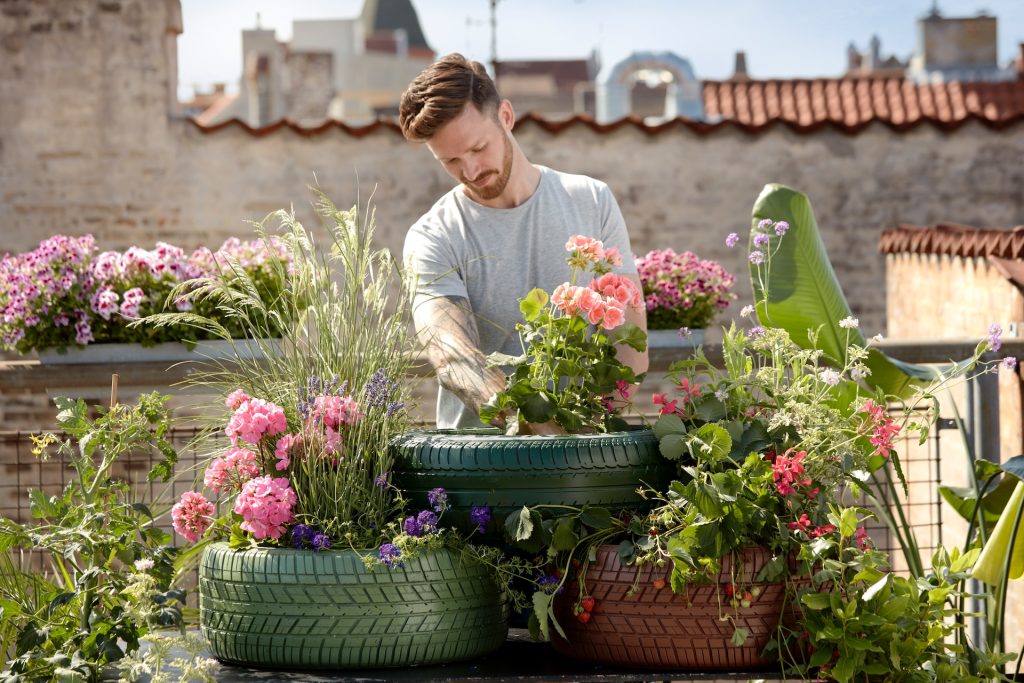
As Glasgow sheds its winter cloak, the city blossoms into a symphony of colors and renewed vitality. Spring signifies a time of rebirth, where dormant gardens awaken, surging with life and promise. The sun, taking a higher arc in the sky, extends its warming embrace, invigorating the soil and coaxing the first buds to unfurl. Songbirds return with melodies, and everywhere, there’s a palpable sense of anticipation. For gardeners, spring is not just a season; it’s an emotion, a call to action, an invitation to witness and partake in nature’s grand resurrection.
1. Spring Bulbs
Autumn’s foresight translates into spring’s spectacle when bulbs burst forth in a dazzling display. Daffodils, with their trumpeted blooms, announce the season’s arrival, followed closely by tulips in a spectrum of hues, from deep purples to vibrant reds. Crocuses, often among the earliest to show, pepper the ground with their delicate petals. In Glasgow, where winters can linger, these bulbous plants offer the first vibrant affirmation of the impending warmer days. Their resilience and beauty serve as a testament to nature’s cyclic rhythm and the wonders of underground life ready to emerge.
2. Vegetables to Plant
With the ground slowly shedding its winter chill, garden beds beckon for a new cohort of crops. Potatoes, those underground gems, can be sown now, anticipating a hearty harvest. Lettuce, with its quick growth cycle, promises fresh salads in a matter of weeks. Peas, climbing gracefully, bring both visual appeal and the promise of sweet, crunchy pods. In the sheltered confines of a Glasgow home, tomatoes and peppers can start their journey, protected from any lingering frosts. Once these seedlings gain strength, transplanting them outdoors paves the way for a summer bounty.
3. Pest Watch
But spring’s warmth, while a boon for plants, also stirs unwanted garden guests. Aphids, slugs, and other pests emerge, eager to feast on fresh foliage. Vigilance becomes a gardener’s ally. Regularly inspecting plants, turning leaves, and checking stems can catch infestations early. In keeping with nature’s balance, ladybugs can be introduced as they’re voracious aphid predators. Neem oil, a natural derivative, acts as both a repellent and pest deterrent. Embracing such eco-friendly solutions ensures a garden thrives without compromising its delicate ecosystem.
4. Lawn Care
Come spring, the lawns of Glasgow once again demand attention. As the grass rejuvenates, regular mowing ensures it remains lush and even. However, the eagerness to achieve a pristine lawn must be tempered with caution. Cutting the grass too short can expose it to drought stress and allow for weed invasion. Aeration, especially in areas with heavy foot traffic, allows the soil to breathe, facilitating better nutrient absorption. Compacted soils can stifle root growth, making aeration a critical spring task. Alongside, a gentle application of spring-specific fertilizer provides the grass with essential nutrients, encouraging verdant growth and resilience against pests.
5. Protect Against Late Frosts
Spring’s charm lies in its unpredictability. Yet, this capricious nature can also be a gardener’s bane in Glasgow. While days might shimmer in warmth, nights can still carry the bite of frost. Tender plants, especially those newly sprouted or transplanted, remain vulnerable. Employing cloches—bell-shaped glass or plastic covers—can offer a microclimate, shielding plants from the cold. For larger areas or rows, frost cloth or horticultural fleece serves as a protective blanket, warding off the chill and ensuring the garden’s tender inhabitants survive to see summer.
6. Staking and Support
Perennials, with their promise of recurring blooms, embark on their upward journey in spring. As they gain height, some, especially those with large flower heads or slender stems, can become top-heavy. Staking early, while they’re still manageable, ensures they grow upright, free from the risk of snapping or drooping under their weight. Using bamboo sticks, metal supports, or even netting can offer the requisite structure, guiding plants gracefully skyward. In the process, gardeners not only ensure plant health but also curate an aesthetically pleasing garden tableau.
7. Garden Clean-Up
Spring heralds a fresh start, and nothing facilitates growth better than a clean garden. Any remnants of autumn—a stray leaf pile, decayed fruits, or other debris—can harbor pests or diseases. Clearing these ensures plants aren’t stifled and have unhindered access to sunlight and air. Additionally, a tidy garden reduces the risk of fungal infections, which often thrive in damp, cluttered environments. Beyond the practical, a clean garden exudes an aura of care and preparation, signaling readiness for the crescendo of colors and life that summer will bring.
Seasonal Gardening In Summer in Glasgow: Lush Vegetation and Vibrant Blooms
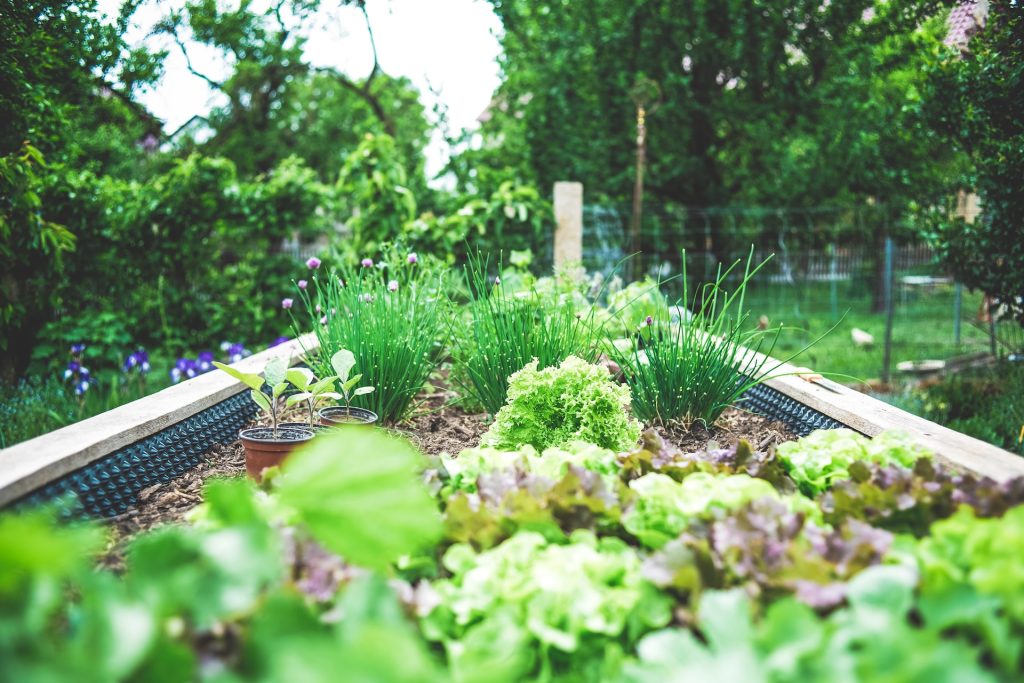
Summer in Glasgow is nothing short of a botanical ballet, with the landscape transforming into a vibrant tapestry of colors and textures. As the days stretch and temperatures rise, gardens respond with a crescendo of life. Sun-drenched beds teem with blossoms, while vegetable patches promise the fruits of meticulous springtime labors. It’s a season where the garden becomes not just a space of cultivation but a sanctuary of beauty and nourishment.
1. Summer Blooming Plants
Summer’s palette in Glasgow is enriched by the presence of iconic bloomers. Roses, the eternal symbols of love and beauty, unfurl their petals in a myriad of hues, from the deepest reds to the most delicate pinks. Lavender, with its slender, fragrant spikes, dances in the breeze, offering not just visual delight but a sensory experience. Geraniums, whether in containers or borders, punctuate the green with their vivid flowers, exuding a timeless summer charm. These plants, nurtured by the Glasgow sun, serve as the backbone of many a summer garden, weaving tales of romance, nostalgia, and sheer splendor.
2. Harvest Time
As summer progresses, vegetable patches turn into treasure troves. Beans, dangling like green jewels, beckon to be plucked. Carrots, their leafy tops hinting at the orange-gold beneath, await harvest. Zucchinis, with their rapid growth, can almost be seen swelling by the hour. In Glasgow’s summer, the act of harvesting becomes a ritual of gratitude. Regularly picking these veggies not only offers fresh, organic produce for the table but also encourages plants to keep producing, ensuring a continuous bounty through the season.
3. Watering and Feeding
The Scottish sun, though not as relentless as in some parts of the world, still brings about longer days and increased evaporation. Plants, in their peak growth phase, have an amplified thirst. Watering, preferably during the early morning or late evening when the sun’s rays are less intense, ensures that plants receive the moisture they need without the risk of scorched leaves. Flowering plants, now in their prime, benefit from potassium-rich fertilizers, which bolster their blooming capabilities, ensuring that Glasgow’s summer gardens remain a riot of colors and fragrances until autumn’s first whisper.
4. Deadheading
In the heart of Glasgow’s summer, plants unfurl their blossoms in a vivid display. However, as the petals begin to wilt and fade, they not only mar the beauty of the plant but can divert energy from new growth. Deadheading, the process of removing these spent blooms, serves multiple purposes. Beyond aesthetic appeal, this practice ensures that plants don’t waste energy on seed production, especially in ornamental varieties where seed propagation isn’t desired. For many species, such as roses and geraniums, deadheading can coax out a second, albeit smaller, wave of flowers, extending the bloom period and ensuring continuous vibrancy.
5. Pond Care
Garden ponds, a haven for wildlife and a tranquil feature in many Glasgow gardens require summer attention. Algae, especially in sun-drenched ponds, can proliferate rapidly, suffocating aquatic life and turning clear waters murky. Manual removal, along with introducing algae-eating fish or using environmentally friendly treatments, can restore balance. Summer’s evaporation might reduce water levels, so regular top-ups with rainwater (or dechlorinated tap water) are essential. Monitoring aquatic plants, ensuring they’re not overcrowded and remain vibrant, guarantees the pond remains a thriving ecosystem.
6. Shade Solutions
Glasgow’s summer sun, while not as blistering as in some global regions, can still pose a threat to sensitive plants. Foliage might wilt or scorch, and young plants risk stunted growth. Offering respite through shading becomes pivotal. Pergolas, wooden or metal structures adorned with climbers, filter the sun, casting dappled light below. Awnings, and retractable fabric canopies, offer instant shade for patios or decks. For vegetable patches or flower beds, shade cloths—mesh-like fabrics that cut out a percentage of sunlight—can shield plants during heatwaves, ensuring they continue their summer growth unimpeded.
7. Continuous Planting
For avid gardeners and those keen on self-sufficiency, a steady flow of produce is the summer dream. Succession planting is the answer. By staggering plantings of fast-growing crops like lettuce, radishes, or beans, one can ensure that as one batch is harvested, another is maturing. This methodical approach guarantees that Glasgow Gardens offer not just a seasonal feast but a continuous one, marrying the joy of gardening with the delight of farm-fresh produce.
Seasonal Gardening In Glasgow in Autumn: Preparations and Planting for the Future
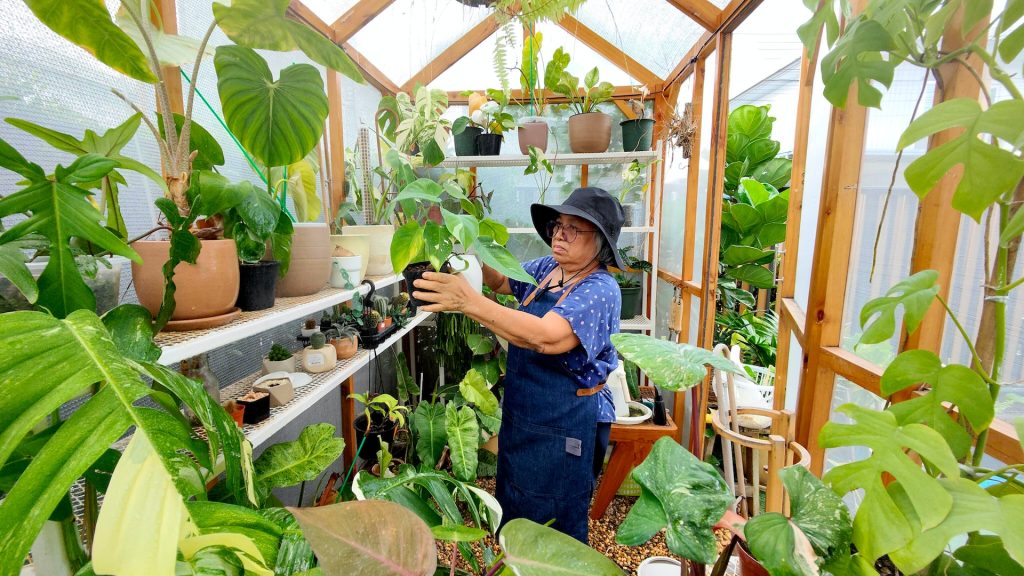
As Glasgow’s vibrant summer gives way to the gentle embrace of autumn, gardens enter a phase of transition. The fiery hues of falling leaves contrast with the crisp air, signaling a period of rest and rejuvenation. While the crescendo of summer blooms might be a memory, autumn is not just an end but a promise of new beginnings. Gardening tasks are important from maintenance and harvest to preparation and foresight.
1. Planting for Spring
Autumn in Glasgow is characterized by the soil still retaining warmth, even as the air cools. This creates an ideal environment for planting spring bulbs such as tulips, daffodils, and hyacinths. By burying these pockets of potential beneath the earth, gardeners invest in the spectacle of spring’s rebirth. Additionally, perennials like rudbeckia and echinacea can be introduced to the garden landscape. Their hardy nature allows them to send down roots in preparation for the winter chill, ensuring a robust growth spurt when spring arrives.
2. Harvesting Root Vegetables
Beneath the soil’s surface, autumn offers a bounty. Root vegetables, having absorbed nutrients throughout the summer, are now ripe for harvest. Turnips, with their crisp texture, parsnips, which become increasingly sweet as the temperature drops, and beetroot, a jewel of the earth, await the gardener’s hand. Some vegetables, notably carrots, undergo a transformation after a frost. The cold converts their starches to sugars, resulting in a sweeter, more flavorful crop, making the first frost in Glasgow a much-anticipated event for vegetable enthusiasts.
3. Composting
Autumn is a season of abundance but also of decay. Leaves, once a verdant canopy, cascade down, and plants retreat inwards. However, in this seeming decline lies the promise of future fertility. Starting a compost pile in autumn is a garden’s way of capturing this ephemeral essence. By layering leaves, plant debris, and organic kitchen waste, one initiates a cycle of decomposition. Over months, these materials break down, aided by microorganisms and worms, to form compost. This rich, dark substance, teeming with nutrients, will nourish Glasgow’s gardens in the coming year, ensuring the cycle of life continues unabated.
4. Leaf Mulch
As the trees in Glasgow shed their autumnal cloak, a golden opportunity arises for gardeners. Collecting these fallen leaves, instead of discarding them, can lead to the creation of leaf mulch—a gardener’s treasure. When piled and allowed to decompose, these leaves break down into a dark, crumbly, nutrient-rich substance. Spreading this over garden beds acts as a protective layer, conserving moisture and warding off weeds. More than just a barrier, it gradually decomposes, enriching the soil with organic matter and ensuring plants in Glasgow benefit from improved soil health and structure.
5. Greenhouse Preparation
For those fortunate enough to have a greenhouse or cold frame, autumn signals preparation time. With winter’s chill on the horizon, these structures become vital in sheltering tender plants and providing a controlled environment for seed germination. But before they play this role, it’s crucial to give them a thorough clean. Eliminating any lurking pests or diseases ensures a healthy start for overwintering plants. Moreover, sanitizing pots, trays, and surfaces can set the stage for a successful early start to next year’s growing season.
6. Lawn Maintenance
While lawns might seem resilient, the rigors of winter can test their endurance. Autumn lawn care in Glasgow is thus centered around fortifying these green expanses. Applying a specially formulated autumn lawn feed, rich in potassium and phosphorus, can strengthen grassroots against the cold and damp. This nutrition also aids in resistance to diseases and moss. If the summer has left bald patches or areas of wear, autumn is an apt time for repair. Sowing grass seed and ensuring consistent moisture can rejuvenate these spots, making sure the lawn remains a lush carpet.
7. Plant Spring-Flowering Bulbs
The magic of spring in Glasgow is often heralded by the iconic blooms of daffodils and tulips. But the bulbous realm offers so much more. Planting diverse bulbs like the spherical blossoms of alliums or the delicate bells of fritillaries can elevate a garden’s spring display. These bulbs, often overlooked, can provide unique shapes, colors, and textures. Nestled in the autumn soil, they await their turn, promising a vibrant tableau when winter’s grip loosens.
Conclusion
As the four seasons ebb and flow, Glasgow’s gardens can truly reflect the city’s vibrant spirit, historical heritage, and deep-rooted connection with nature. Seasonal gardening isn’t merely about planting seeds or harvesting produce; it’s a dance with time, an understanding of ecological balance, and a celebration of life’s cyclical beauty. By intertwining traditional gardening wisdom with modern horticultural practices, Glaswegians can cultivate spaces that not only enhance biodiversity but also promote sustainable and organic urban living. Whether you’re a novice gardener or a seasoned expert, Glasgow’s ever-changing canvas of flora offers endless opportunities to learn, grow, and flourish. Embrace each season, and let your garden tell its unique story throughout the year.
FAQs
Seasonal gardening in Glasgow refers to gardening practices tailored to the city’s distinct seasons. It emphasizes optimizing plant growth, maintenance, and harvest according to the unique conditions of each season, ensuring gardens remain vibrant throughout the year.
Leaf mulch is vital because it conserves soil moisture, deters weeds, and improves soil health. In Glasgow’s autumn, fallen leaves can be collected and decomposed into a nutrient-rich mulch, providing organic matter and enhancing soil structure.
Preparing a greenhouse for winter involves a thorough cleaning to eliminate pests and diseases. Sanitizing pots, trays, and surfaces ensures a healthy environment for overwintering plants or an early start to the next growing season.
In Glasgow, autumn lawn maintenance includes applying an autumn-specific lawn feed to strengthen grassroots. Repairing bald patches or areas of wear, either by sowing grass seed or ensuring consistent moisture, ensures a lush lawn even in winter.
While daffodils and tulips are popular choices, diversifying with bulbs like alliums and fritillaries can elevate a garden’s spring display. Planting these in autumn ensures a colorful and varied tableau come springtime.
Composting recycles plant debris and organic waste, converting it into nutrient-rich compost. In Glasgow, starting a compost pile in autumn captures the essence of decay, which when decomposed, nourishes the garden, promoting plant health and soil fertility.
In Glasgow’s summer, watering plants during cooler hours reduces evaporation. Additionally, using potassium-rich fertilizers sustains flowering plants’ blooms and ensures their vibrant display throughout the season.
Spring’s warmth in Glasgow can invite pests. Regular monitoring and employing natural methods, like introducing ladybugs or using neem oil sprays, can effectively keep unwanted critters at bay and protect plants.
Autumn planting allows spring bulbs and certain perennials to establish roots before winter. By doing so, they’re better prepared for a robust growth spurt in spring, ensuring a vibrant display when the season arrives.
Natural methods such as introducing beneficial insects (like ladybugs), using neem oil, or employing barriers and traps can be effective. Additionally, practicing crop rotation and companion planting can deter pests in a more organic way.

Home Decor
How to Choose Strata Painting Services in London

London is home to countless high-rise apartments, office complexes, and historic buildings, all requiring regular upkeep to maintain their charm and durability. One crucial aspect of property maintenance is strata painting, which ensures interior and exterior shared spaces remain visually appealing and well-protected.
Unlike standard painting jobs, strata painting involves special coatings, weatherproofing, and compliance with strict safety regulations to meet the needs of multi-unit buildings.
With London’s frequent rainfall, pollution, and varying architectural styles, choosing a reliable strata painting service isn’t just about aesthetics—it’s about long-term protection and value preservation.
Whether it’s a modern glass-covered skyscraper in Canary Wharf or a centuries-old residential complex in Kensington, the right painting professionals can help enhance curb appeal while ensuring structural integrity.
What Does Mean By Strata Painting?

Strata Painting is a specialized painting service designed for multi-unit properties like apartment buildings, townhouses, and commercial complexes. It ensures that shared areas such as hallways, staircases, lobbies, and exteriors are well-maintained and protected against weather damage.
For instance, in central London, high-rise buildings often require weatherproof coatings to withstand frequent rain and pollution. In contrast, heritage buildings in Westminster may need specialized paints to preserve their original look while complying with heritage protection laws. This makes strata painting essential for maintaining property aesthetics, longevity, and value.
Key Factors of Choosing Strata Painting Services in London

1. Use of Drones for Building Inspections Before Painting
Drones have revolutionized building inspections by providing aerial views of high-rise strata properties, allowing for detailed assessments of structural damage, peeling paint, and moisture penetration. This reduces the need for scaffolding-based manual inspections, cutting costs and improving safety. According to a 2023 study, over 40% of London’s property management firms have integrated drone inspections for maintenance planning, proving its growing popularity in the industry.
2. Use of Biodegradable and Non-Toxic Paints
With stricter UK environmental regulations, London-based strata painting companies are shifting towards biodegradable, non-toxic, and low-VOC (Volatile Organic Compound) paints. These eco-friendly options improve indoor air quality while minimizing harmful chemical emissions. Reports indicate that over 60% of newly developed residential buildings in London now use low-VOC paints to meet sustainability standards.
3. Green Certifications for Environmentally Responsible Contractors
Many strata painting contractors in London seek BREEAM (Building Research Establishment Environmental Assessment Method) and LEED (Leadership in Energy and Environmental Design) certifications to showcase their commitment to sustainability. Buildings with BREEAM-certified painting solutions have been shown to reduce energy consumption by up to 25% annually, making them an attractive option for property developers and management companies.
4. Self-Cleaning and Heat-Reflective Coatings
With London’s variable climate, self-cleaning coatings have gained traction due to their ability to reduce dirt accumulation and grime buildup on painted surfaces. These coatings, often made with titanium dioxide-based formulas, break down organic dirt through photocatalysis. Similarly, heat-reflective coatings help reduce indoor cooling costs in London’s commercial buildings by reflecting UV rays. Studies indicate that heat-reflective paints can lower interior temperatures by up to 5°C, cutting energy expenses by 15-20% annually.
5. 3D Visualization Tools for Previewing Color Schemes
Choosing the right color scheme is a crucial decision in strata painting. 3D visualization tools allow property owners, managers, and residents to preview multiple color options and finish in real-time before painting begins. These tools, widely used by top painting contractors in London, help reduce color mismatches, improve client satisfaction, and streamline the decision-making process.
6. Automated Painting Equipment
Automation is transforming the strata painting industry by improving efficiency, safety, and consistency. High-rise buildings in London are increasingly adopting robotic painting systems that use precision-controlled spray mechanisms to coat large surfaces evenly. These systems reduce labor costs by up to 30% and enhance safety by minimizing human exposure to hazardous heights and harsh weather conditions.
7. Integration of Solar-Reflective Coatings to Reduce Energy Consumption
Solar-reflective coatings are gaining popularity in London’s high-rise and commercial strata projects. These coatings are designed to reflect UV radiation, preventing excessive heat absorption and reducing the reliance on air conditioning. Studies suggest that buildings treated with solar-reflective coatings can cut cooling costs by up to 20%, particularly in densely populated areas like Canary Wharf and Central London.
8. Smart Coatings with Antimicrobial Properties
Post-pandemic hygiene concerns have led to the widespread adoption of antimicrobial coatings in London’s residential and commercial strata properties. These advanced coatings inhibit bacterial and mold growth, making hallways, lobbies, and shared areas more hygienic. Popular in hospitals and commercial offices, these coatings are now being used in luxury residential complexes to improve indoor air quality and overall sanitation.
9. Water-Based Paints Instead of Oil-Based Solutions
Switching to water-based paints has significantly reduced pollution and carbon footprints in London’s painting industry. These paints dry faster, emit fewer chemicals, and are easier to clean up, making them a preferred choice for strata projects aiming to comply with environmental regulations. Data from the UK Green Building Council (UKGBC) indicates that over 70% of professional painting projects in London now use water-based coatings, marking a shift towards greener practices.
10. Recycling and Waste Reduction Initiatives
Many strata painting contractors now offer paint can recycling programs and waste reduction initiatives. Several London-based firms partner with recycling facilities to repurpose leftover paint, reducing landfill waste and promoting sustainability. This trend aligns with the UK government’s 2030 sustainability goals, pushing more companies to embrace eco-conscious disposal practices.
11. Automated Painting Equipment
Automation is transforming the strata painting industry by improving efficiency, safety, and consistency. High-rise buildings in London are increasingly adopting robotic painting systems that use precision-controlled spray mechanisms to coat large surfaces evenly. These systems reduce labor costs by up to 30% and enhance safety by minimizing human exposure to hazardous heights and harsh weather conditions.
Common Challenges for Strata Painters in London
- Weather conditions: London’s high humidity and frequent rain require special coatings. Unpredictable weather patterns can delay painting schedules and increase drying time, making it essential to choose weather-resistant paints.
- Regulatory compliance: Following UK Work at Height Regulations 2005 and health and safety laws is mandatory. Additional permits may be required for buildings located in heritage areas or conservation zones.
- Minimal disruption: Painters must work efficiently around residents and businesses. This means planning schedules to avoid peak hours, working in phases, and using quick-drying, low-odor paints to reduce inconvenience.
- Access restrictions: High-rise and multi-story buildings require specialized access techniques such as rope access, scaffolding, or hydraulic lifts. Ensuring compliance with safety regulations is critical for worker safety.
- Specialized Coatings and Compliance: Buildings in London may require fire-retardant coatings, anti-mold treatments, or UV-resistant paints to comply with building safety and environmental standards.
- Surface Preparations: Addressing existing cracks, leaks, or damaged surfaces before painting begins is vital for long-lasting results. This may involve power washing, applying primers, and fixing structural defects.
- Tenant Communication: Informing tenants about timelines and expected disruptions is key to maintaining a positive relationship. Property managers must provide clear notices regarding paint odors, restricted access areas, and safety precautions to ensure cooperation.
- Logistics and Scheduling: Coordinating painting schedules with property managers and tenants is crucial to prevent delays. Large-scale projects require meticulous project management to allocate labor and resources effectively.
- Budget Constraints: Strata painting projects often operate on tight budgets. Proper cost estimation, avoiding hidden fees, and choosing cost-effective yet durable paint solutions can help balance quality and affordability.
Home Decor
Choosing and Fitting out your new Retail Location

For many small businesses, opening a retail location is a dream come true. It can however be a very stressful experience, with so much to consider and organize.
Customers prefer their shopping experience when the shop is well-designed and maintained. If they are satisfied with their experience, they will be more likely to make purchases, stay for longer and also return. Therefore, getting it right is very important. It is also useful to have a good shop layout and plan in case you ever open other stores, as it will make the process a lot quicker and easier.
Planning your strategy for shop fitting will make your life a lot easier, saving both time and money. Establishing a schedule is really helpful as you can better understand when you want things done and estimate a date of when the shop will be ready to open. Establishing a budget will give you an idea of how much you can spend on certain areas and where you may need to try to save money. A shop fitting expert will be able to advise you on any aspects of the process, or complete the whole job if you want!
1. Plan your space before fitting out your shop
You must first consider the type of shopping experience you want to provide. Think about how you want your customers to view the store and how you can ensure they see the right things. Well-designed areas can encourage customers to see all they need to and even to stay in the shop longer.
When it comes to layout, you must think carefully. Research has found the majority of customers turn right when they first walk into the shop. Therefore it may be useful to strategically place your most enticing offers and displays in these areas.
Functionality is the top priority. Usability is just as, sometimes even more important within retail spaces than aesthetic factors. You must keep in mind the room’s key purposes, and what the customers’ motivations will be when entering the shop.
Lighting is another important aspect to consider when designing your shop. Different tones of lighting can be used to give the store more or less color, and enhance the products on sale. Ambient lighting can be used for a softer look, or spotlights can be used for maximum brightness. Play around with different types to see what best fits your brand and your space.
2. Decide on your budget
Do some research to get a sense of what this would cost and use this information to create a reasonable budget. Decide on what your priorities will be, and allocate more budget to them if needed. This might take a bit of time to research but it will be worth it to ensure you have a clear view of the costs involved. It will also ensure you don’t get overcharged for any products or services.
3. Hire a shop fitting specialist
A shop fitting expert will have the knowledge and experience to understand how your shop can work and look best. They will have a unique view of how it can be designed and will ultimately ensure your shop has the best layout possible. They also will have a large network of contacts within the industry so will be able to use top-quality services and suppliers and they will have good prices negotiated with them. They will also have an understanding of health and safety issues, so they will ensure the shop complies with safety regulations. For example, they will be able to quickly see if there are any potential trip hazards or fire dangers and advise what to do to solve the issue.
You could consider contacting a local carpenter who can help with shelving and other fittings at a more reasonable rate if you are not able to afford a shop fitter. You will also need to hire a skilled electrician for electrical installations. Choosing one that has experience in shop fitting electrical installation would be the best option.
4. Purchase furnishings and fixtures
You will need to buy shelving systems, display stands, islands, or railings to organize your shop. Investing in good quality fixtures may help you out in the long run. You will also want some simple shelving for storing cupboards and back-of-house storage, and a counter for payments. Consider how much stock you want to be on show and how it can be best displayed. For example, a boutique clothing store may want fewer items on the shop floor but nicely displayed, whereas a discount store will have lots of stock tightly packed in. Measure everything accurately, especially when ordering online, to ensure everything will be the right fit.
Purchasing pre-owned equipment can help you save money. If you’re looking for secondhand retail equipment, check out websites like Gumtree, Preloved.co.uk, and eBay.
5. Purchase shop supplies
You will need to purchase a variety of other supplies needed for your shop. You may need a label maker to make price stickers or a tagging gun to attach price tags to your products. You may need additional point-of-sale labeling, signs, shelf labels, and promotional marketing materials. You will need a till, an electric point-of-sale system for processing payments at the point of sale. When it comes to payments, it is good to be able to accept as many different options as possible to ensure you aren’t losing any customers. While a lot use contactless options nowadays, some customers do use cash so you must be able to cater to both.
A safe can also be useful to consider buying, as it can hold your shop’s proceeds safely. Consider purchasing CCTV cameras, particularly in blind spots to discourage shoplifters and provide your store with extra security. A burglary alarm may also be worth buying for when no one is in the shop. Ensure fire alarms and smoke detectors are in the right places and regularly test these.
Other essential services like rubbish collection, water, gas, electricity, internet, and insurance must all be taken into consideration. Again, it might be worth doing some research to find reasonably priced suppliers.
There is a lot you will need to organize and plan, so make sure you allocate yourself enough time to get it done. Spending a bit of extra time doing more research could help you save a lot of money and will ensure you get it done right.
Home Decor
Cleaning in Central London: Is DIY Cleaning Effective or Should You Hire Professionals in London?

Central London, with its grandeur and historic charm, stands as a testament to time, holding stories of eras gone by within its brick and mortar. Wander its streets, and you’ll pass iconic landmarks, grand townhouses, quaint cafes, bustling markets, and corporate skyscrapers, all humming with life. But, as every resident knows, life in Central London isn’t just about enjoying the sights and sounds. It’s also about maintaining and upkeeping these spaces, ensuring that the charm remains untarnished. This leads to an inevitable question every Central London dweller grapples with: “Should I roll up my sleeves and clean my space myself, or is it wiser to hire a professional?” The hustle and vibrancy of Central London, combined with its unique challenges, makes this decision particularly compelling.
Cleaning By Yourself

Embarking on a DIY cleaning journey is akin to taking a self-guided tour through the myriad streets of Central London. There’s an unparalleled sense of discovery and accomplishment in every corner cleaned and every stain vanquished. DIY cleaning empowers individuals, giving them full control over their environment. You decide on the products, ensuring they’re in line with your values, be it eco-friendliness or a particular scent preference. Additionally, the hands-on approach fosters a deep connection with one’s living space, understanding its every nook and potential challenge. However, it’s also essential to remember that this route demands time, energy, and a fair amount of dedication. Just as navigating Central London’s streets requires a keen sense of direction and occasional patience, DIY cleaning necessitates a commitment to learning and adapting.
Pros of DIY Cleaning in Central London

1. Save Money
One of the primary benefits of DIY cleaning in Central London, or anywhere for that matter, is the potential savings. The cost of hiring professional cleaning services can add up, especially if done regularly. On the other hand, if you decide to clean yourself, you only have the initial outlay for cleaning products. Over time, this can lead to substantial savings. It’s like cooking at home versus eating out; the former is almost always more budget-friendly.
2. Choose Products
Going the DIY route gives you the luxury of choice. Central London has a plethora of shops selling a variety of cleaning products. Have a penchant for lavender-scented floor cleaners? Or perhaps you’re particular about using eco-friendly, biodegradable products? Cleaning yourself means you get to choose exactly what goes into maintaining your space, ensuring it aligns with your personal preferences and ethical choices.
3. On Your Time
The beauty of DIY cleaning lies in its flexibility. Central London life can be unpredictable, with work commitments, social events, and other unforeseen occurrences. Not being tied down to a professional cleaner’s schedule means you can clean at 2 a.m. or 2 p.m., whatever works best for you. It’s about setting your rhythm and sticking to it.
4. Personal Touch
Every home in Central London, whether a modern flat or a historic townhouse, has its quirks. You’re best acquainted with that stubborn corner or the delicate surface that requires a gentler touch. DIY cleaning ensures that your home is cared for with a familiarity and affection that only you can offer. It’s about knowing your space inside out and tending to its unique needs.
5. Immediate Action
There’s a sense of immediacy and responsiveness with DIY cleaning. Picture this: you accidentally knock over a glass of red wine on your white rug. Instead of scheduling a cleaner and watching the stain set, you can take immediate action, armed with your arsenal of cleaning supplies. Quick response times often mean lesser damage and more effective cleaning. After all, in the lively backdrop of Central London, who wants to wait?
6. Stay Fit
Picture the bustling streets of Central London. Now, imagine the energy of the city channeled into a cleaning spree in your home. Scrubbing, vacuuming, and even the simple act of dusting can elevate your heart rate and get those muscles working. For those who skip the gym, a thorough cleaning session can be an unexpected way to burn calories. In a way, every push of the mop and every sweep of the broom becomes a mini-exercise, making your home shine while giving you an invigorating workout. here are some expert cleaning tips that you need to know.
7. Safety
Living in the heart of Central London, amidst its vast urban sprawl, one often yearns for personal safety and peace of mind. When you handle your cleaning, you’re in total control of what products are used. No need to worry about strong chemicals or substances that could harm pets or family members. It’s about ensuring your haven remains uncontaminated and safe, preserving the sanctity of your personal space.
8. Learning
Just like Central London constantly evolves and adapts, so does your cleaning prowess with time. Every stain faced and every challenge overcome becomes a lesson. Maybe you’ll discover that baking soda works wonders in a greasy oven or that lemon is the answer to limescale. As time progresses, your cleaning toolkit of tricks will expand, making each subsequent clean quicker and more effective. It’s a journey of discovery, right in the comfort of your home.
9. Control
Central London, with its ever-present hum of activity, can sometimes feel overwhelming. In such an environment, the sanctuary of one’s home becomes even more vital. By undertaking your cleaning, you ensure that the only people within your sanctuary are those you trust. There’s a comfort in knowing that your personal space remains undisturbed, your belongings untouched by unfamiliar hands. It’s all about maintaining a personal, controlled environment amidst the city’s buzz.
10. Satisfaction
Just like the pride one feels in calling Central London home, there’s a profound sense of accomplishment in looking around a freshly cleaned space and knowing it’s all your handiwork. Each gleaming surface and each spotless corner stands as a testament to your effort. The satisfaction derived from a job well done, from seeing your home at its best, is unparalleled. It’s a feeling of accomplishment, akin to conquering a piece of Central London, one clean room at a time.
Cons of DIY Cleaning in Central London

1. Time-Consuming
Living in Central London, with its kaleidoscope of activities and events, there’s always something to engage with. Yet, DIY cleaning often demands hours of dedicated effort. From scrubbing the bathroom tiles to ensuring the kitchen shines, it can be a day-long affair, often stretching into your precious weekends. This commitment can mean missing out on a sunny afternoon in Hyde Park or a visit to the latest pop-up cafe.
2. Missed Spots
Even the most meticulous among us might overlook certain areas. Professionals, with their trained eyes, are adept at identifying and addressing dirt in sneaky spots – like the underside of a shelf or the gap behind a radiator. In the vast landscape of a Central London home, some spots might just elude the untrained eye.
3. Lack of Expertise
No matter how dedicated, certain stains can stump the best of us. Be it a wine stain on a cherished rug or stubborn grime on the oven, without the know-how, these can turn into persistent issues. Professionals often come armed with techniques honed over the years, something a DIY approach might lack.
4. No Heavy Equipment
A typical Central London flat might have a vacuum and some basic cleaning tools. But professionals bring in heavy-duty equipment – steam cleaners, high-power vacuums, and more. Such equipment can tackle deep-seated dirt and provide a level of cleanliness that’s tough to achieve with standard tools.
5. Can Be Tiring
After a long week navigating Central London’s hustle and bustle, cleaning can feel like running a marathon. The physical effort, combined with the mental concentration, can be exhausting, leaving you spent and devoid of energy for other pursuits.
6. Resource Heavy
An amateur cleaner might end up using more water for mopping or keeping the vacuum running longer than necessary. This can inadvertently lead to a higher utility bill, not to mention the environmental implications. Efficient use of resources is both eco-friendly and wallet-friendly.
7. Not Always Efficient
While there’s a charm in the DIY approach, it might not always be the quickest route. Professionals, with their systematic methods, can often achieve more in less time. What might take you a full day could be a matter of hours for a seasoned cleaner.
8. Risk of Damage
Central London homes, with their blend of modern aesthetics and vintage charm, require care. Using the wrong cleaning agent on a wooden surface or scrubbing a delicate fabric can cause irreversible damage. Without expert knowledge, such mishaps are potential pitfalls.
9. Storage
Cleaning supplies, in all their variety, demand space. Central London homes, often pressed for space, can feel cluttered with bottles, mops, buckets, and more. Storing these efficiently becomes another task in itself.
10. Can Get Repetitive
The romance of cleaning, if any, can wear thin over time. Doing the same tasks week in, and week out, can feel mundane and monotonous. In a city that offers new experiences at every corner, cleaning can start feeling like a repetitive chore, devoid of novelty.
Hire Cleaning Professionals in Central London

Engaging the services of cleaning professionals in Central London is like hiring an expert tour guide for a historic landmark. You’re assured of depth, precision, and a wealth of experience. Professionals come armed with the latest tools and techniques, ensuring that every inch of your living space gets the meticulous attention it deserves. They offer the luxury of time – while they work their magic, you’re free to pursue other passions or simply relax. Moreover, Central London’s cosmopolitan nature means access to a variety of cleaning services tailored to specific needs, from eco-friendly solutions to specialized deep cleans. Yet, this convenience comes at a price and relinquishes some personal control. Just as an expert tour might skip a spot you find fascinating, professional cleaners might not always align with every minute preference.
Pros of Hiring a Cleaning Professional In Central London

1. Expert Clean
Navigating the complexities of a thorough cleaning requires a level of expertise that professionals have honed over many years. Just as the architectural wonders of Central London are best appreciated by those knowledgeable in history, the intricacies of cleaning are best addressed by experts. Professionals are trained to identify and tackle stubborn stains, know the best techniques for various surfaces, and navigate the trickiest of spots with ease. It’s like having an artisanal craftsman at work, ensuring every nook and cranny of your Central London home gleams with perfection.
2. Time-Saving
Central London pulsates with a rhythm of its own, offering a plethora of experiences, from theatre visits to riverside strolls. Hiring professionals ensures that your time isn’t consumed by the arduous task of cleaning. Instead of spending hours scrubbing and polishing, you can immerse yourself in the delights of the city, or simply enjoy a quiet afternoon with a book. In essence, you’re trading cleaning hours for leisure moments, making the most of what Central London has to offer.
3. Better Tools
Much like a seasoned chef arriving with a set of gourmet tools, professional cleaners come equipped with top-of-the-line equipment. This isn’t just your everyday vacuum or mop; these are specialized tools designed to achieve a deep clean, tackling dirt and grime that might remain elusive to conventional cleaning methods. Whether it’s a high-powered steam cleaner that rejuvenates your carpets or a state-of-the-art scrubber that makes your floors shine, these tools elevate the cleaning quality, ensuring your Central London home gets the royal treatment it deserves.
4. Stress-Free
The daily hustle of Central London, as exhilarating as it is, can also be taxing. Amidst the bustle, the idea of coming home to a cleaning task can feel daunting. Entrusting this responsibility to professionals takes a weight off your shoulders. There’s an immense comfort in knowing that your home will be spotless without you moving a muscle. Imagine enjoying a serene sunset over the Thames, knowing that by the time you return, your living space will be in impeccable order. It’s a luxury, a break from chores, allowing you to truly relax.
5. Consistent Results
There’s a rhythm and reliability with professionals that’s hard to replicate in DIY efforts. Just as you can expect consistent service at your favorite Central London bistro, professional cleaners ensure the same level of pristine cleanliness every single time. No fluctuations, no missed spots—just a predictable, high-quality clean that gives you peace of mind. It’s about knowing that regardless of the challenges your space presents, the outcome will always be consistently stellar.
6. Tailored Packages
Navigating Central London’s diverse residences requires a flexible approach. Many professional cleaning services have recognized this and offer bespoke packages that are moulded to individual needs. Whether it’s a loft requiring special attention or a townhouse with specific cleaning demands, these tailored services ensure that every home gets the exact care it necessitates, reflecting its unique character.
7. Insured Services
In the rare instance where an unexpected mishap occurs, many professional cleaners come with the assurance of insured services. This means that if something is accidentally damaged or broken, the liability is on them. It’s an added layer of security, ensuring that your precious belongings in Central London are always safeguarded.
8. Deep Clean
Professionals don’t just clean; they delve deep. From the unseen dust beneath the furniture to the overlooked grime in window tracks, they ensure every part of your Central London dwelling shines. Their trained eyes and expert methods guarantee that even the most hidden spaces receive thorough attention, rejuvenating your entire living space.
9. Eco-friendly Options
With a growing consciousness of the environment, many cleaning professionals in Central London have adopted green cleaning methodologies. They harness eco-friendly products that are not only gentle on your home surfaces but also kind to the planet. It’s a harmonious blend of meticulous cleaning without compromising on environmental values.
10. Regular Scheduling
The rhythm of life in Central London can be demanding. Professional cleaners simplify this by offering regular scheduling options. Whether it’s a weekly spruce-up or a monthly deep clean, you can set a routine that suits you. Once scheduled, it’s a hands-off approach, allowing you to immerse yourself in city life, confident that your cleaning needs are systematically addressed.
Cons of Hire Cleaning Professionals

1. Costlier
Central London, with its upscale lifestyle, often comes with hefty price tags, and professional cleaning is no exception. While you do get top-notch service, this expertise comes at a premium. Over time, these costs can accumulate, potentially straining the household budget, especially when compared to DIY cleaning.
2. Strangers in Home
For many Central London residents, their homes are intimate sanctuaries. Having unfamiliar faces navigate these personal spaces can be disconcerting. Despite professionals’ best intentions, the mere presence of someone unknown can make some individuals uneasy, detracting from the comfort of their own homes.
3. Rely on Availability
Professionals, especially the highly sought-after ones in Central London, have tight schedules. This means you might have to adjust your plans according to their availability. If you’re someone who values spontaneity or has unpredictable hours, this can be a challenge.
4. Possible Overbooking
With the bustling pace of Central London, it’s not uncommon for popular services to be in high demand. This can sometimes lead to overbookings. You might be geared up for a cleaning session, only to find out your slot has been double-booked or rescheduled.
5. Communication Barriers
Every Central London home has its quirks and specifics. Conveying these unique requirements, especially if the cleaning crew is frequently changing or if there’s a language barrier, can be tricky. Misunderstandings can lead to areas being overlooked or cleaned in a manner you didn’t prefer.
6. Wait Times
Life in Central London is dynamic. Spills and messes can happen spontaneously, but professional cleaners can’t always be summoned at the drop of a hat. You might find yourself waiting for their next available slot, making immediate cleaning needs a bit cumbersome.
7. Trust Issues
Handing over the keys to your Central London abode is a significant act of trust. With frequent news about breaches of privacy, some individuals find this step daunting. The idea of granting access to one’s personal space, especially during work hours when no one is home, can be a source of anxiety.
8. Potential for Breakages
Professionals, though skilled, are still human. Accidents, like knocking over a cherished vase or a misstep causing a small dent, can happen. While insurance might cover damages, certain sentimental items are irreplaceable, leading to distress.
9. Less Personalised
Professional cleaners in Central London are trained for efficiency. Their aim is to get the job done proficiently in the allocated time. While this ensures a clean home, it might not always account for the little personal preferences one might have, making the process seem somewhat mechanical.
10. Can Become Dependent
Relying regularly on professionals can create a sense of dependency. Over time, one might find themselves at a loss when faced with basic cleaning tasks or simple stain removals. It’s like always eating out at Central London’s finest and then forgetting the basics of cooking at home.
Conclusion
In the end, the choice between DIY and professional cleaning in Central London boils down to personal preferences, lifestyle, and priorities. It’s about striking a balance between convenience and cost, between personal involvement and expert intervention. Whichever route you choose, the ultimate aim remains the same: a clean, comfortable, and inviting space to call home in the heart of one of the world’s most captivating cities
-

 Business3 years ago
Business3 years agoThe Most Efficient Ways To Use The Best 6 Business Keynote Presentations
-
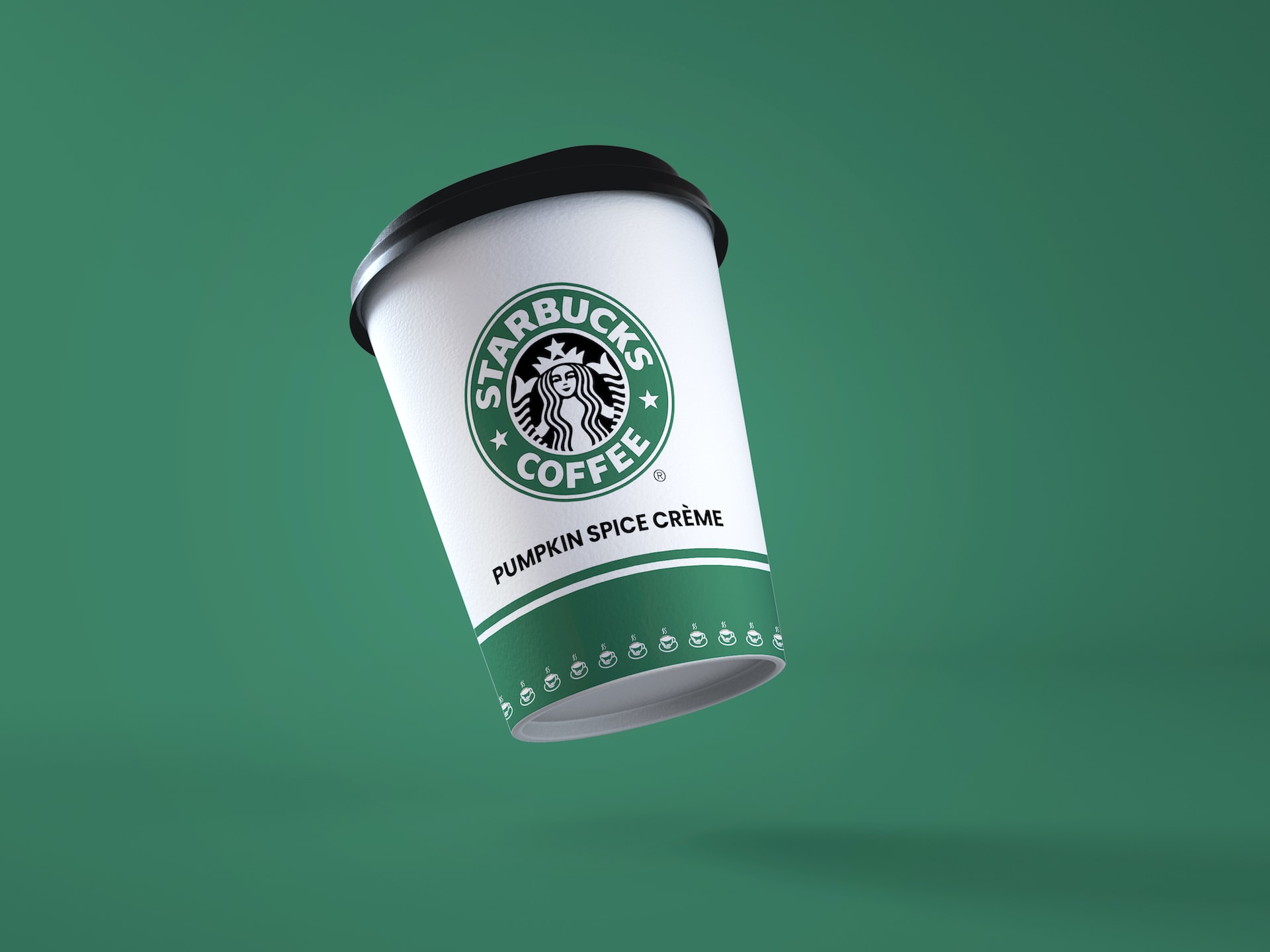
 Apps and Software7 months ago
Apps and Software7 months agoStarbucks Partner Hours App Login Guide
-

 Entertainment7 months ago
Entertainment7 months ago15 Best IPTV Service Providers in the UK 2025
-

 Tech3 years ago
Tech3 years agoIs Forecasting A Part Of Data Science?
-

 Economy3 years ago
Economy3 years agoWhat does it mean to Dream About Pennies?
-

 Entertainment7 months ago
Entertainment7 months ago10 Best Free Video Player Apps For Apple TV
-

 Travel2 years ago
Travel2 years agoBenefits of UK Skilled Worker Visa for International Professionals
-

 Entertainment2 years ago
Entertainment2 years agoHow To Enhance Your Viewing with Video Subtitle Support





























